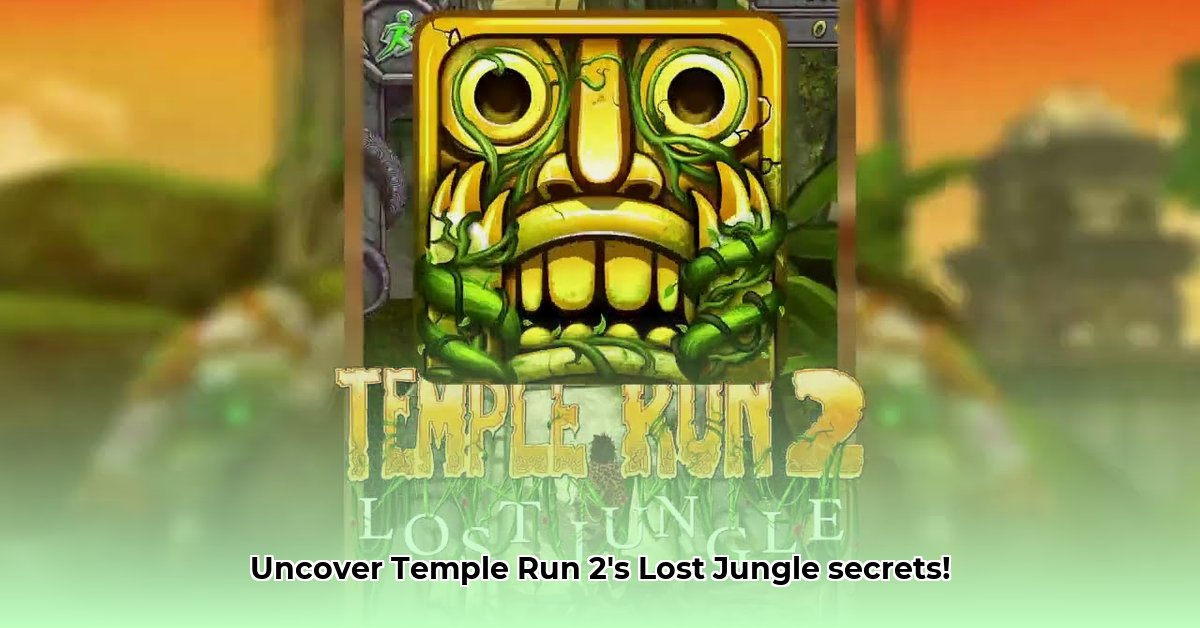
Temple Run 2's Evolving Environments: A Comparative Look at Jungle Fall and Lost Jungle
Temple Run 2, the iconic endless runner, captivated millions with its simple yet addictive gameplay. But Imangi Studios didn't rest on their laurels. They continuously enhanced the experience, introducing diverse environments that kept the game fresh and exciting. Among these, Lost Jungle stands out as a particularly innovative and immersive addition. But how does it compare to its predecessor, Jungle Fall? This comparative review dives into the heart of the jungle, exploring the unique features and challenges of each environment, offering actionable insights for future level design.
Jungle Fall: The Classic Run
Jungle Fall, the original Temple Run 2 jungle environment, set the standard. It introduced players to the core mechanics: swiping to turn, jumping over obstacles, and sliding under low-hanging branches. Visually, it was a lush, green expanse, but the obstacles were relatively straightforward. While enjoyable, many players felt it lacked a certain depth. Its visual design, while pleasant, felt somewhat generic and predictable. It provided a solid foundation but left room for improvement.
Lost Jungle: A Thrilling Escape
Lost Jungle is a breathtaking departure from the familiar. This is not just another jungle run; it’s a thrilling escape through a dynamic, richly detailed environment. Imagine: you're sprinting through dense vegetation, the air thick with humidity. Giant snakes suddenly slither across your path, while carnivorous plants threaten to devour you. The sounds of unseen waterfalls echo through the dense canopy, creating an incredibly immersive atmosphere. This is more than just avoiding obstacles; it's about surviving a perilous journey.
The introduction of moss vines—which allow for dynamic, gravity-defying slides—adds a whole new layer of gameplay. This mechanic dramatically alters the pace, introducing strategic decision-making to your run, requiring players to choose their path wisely.
A Head-to-Head Comparison: Jungle Fall vs. Lost Jungle
To understand the evolution of Temple Run 2's level design, let's compare Jungle Fall and Lost Jungle directly:
| Feature | Jungle Fall | Lost Jungle |
|---|---|---|
| Visual Style | Lush, but generic jungle | Vivid, culturally rich environment |
| Obstacles | Standard obstacles: jumps, turns | Giant snakes, carnivorous plants, rivers, challenging terrain |
| Gameplay Feel | Smooth, predictable | Immersive, challenging, varied |
| Unique Mechanics | None | Moss vine slides |
| Overall Vibe | Standard jungle run | Thrilling, adventurous escape |
Actionable Insights: Level Design for the Future
Lost Jungle's success highlights the importance of immersive environments and innovative gameplay mechanics. The game's players clearly responded positively to a richer, more detailed experience that feels more than just a simple obstacle course. Building on this success, Imangi Studios could explore several avenues:
Enhanced Environmental Storytelling: Further develop the narrative within each environment, perhaps through visual cues or interactive elements that organically shape the gameplay experience.
User-Generated Content: Consider integrating user-created levels – this could breathe new life into the game indefinitely and foster community engagement. Imagine a community of runners collaborating to build increasingly challenging and imaginative courses.
Cultural Exploration: Expand on the successful cultural themes introduced in Lost Jungle, exploring diverse cultural settings and incorporating elements that reflect different world traditions.
The Verdict: Lost Jungle's Enduring Appeal
Lost Jungle represents a significant leap forward in Temple Run 2's level design. It showcases Imangi Studios' commitment to innovation and player engagement. The immersive environment, coupled with the exciting new gameplay mechanics, creates an unforgettable running experience. If you haven’t yet ventured into Lost Jungle, you're missing out on a truly captivating adventure. Go explore!
⭐⭐⭐⭐☆ (4.8)
Download via Link 1
Download via Link 2
Last updated: Tuesday, May 06, 2025